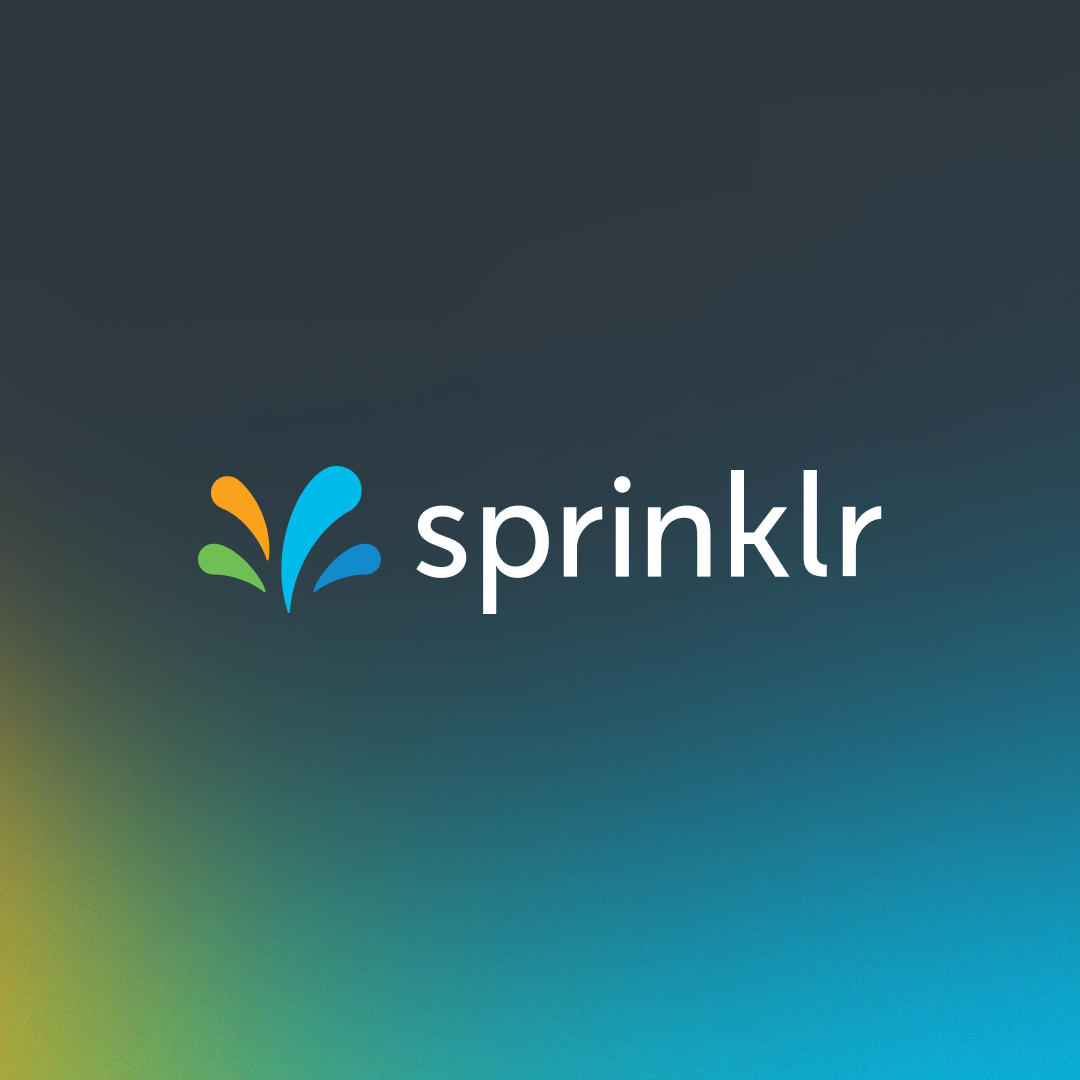The AI-first unified platform for front-office teams
Consolidate listening and insights, social media management, campaign lifecycle management and customer service in one unified platform.
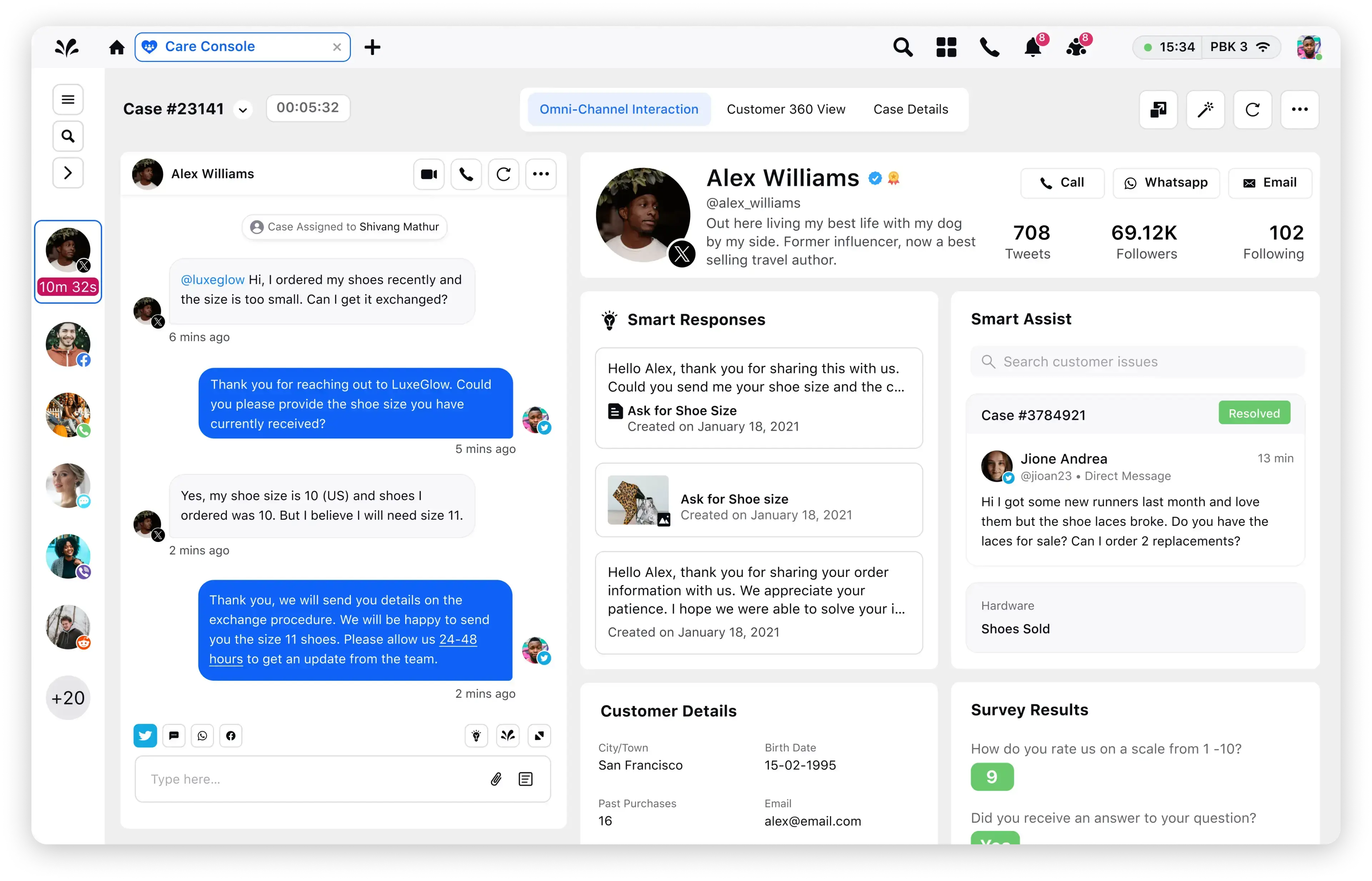
8 B2B Customer Engagement Strategies to Implement in 2025 (+ Pro Tips)
Unlike B2C, where decisions often rely on individual preferences, B2B customer engagement involves navigating the complexities of a decision-making unit (DMU).
Gatekeepers, influencers, and decision-makers each bring unique priorities to the table, making B2B engagement strategies more intricate and requiring thoughtful execution to achieve meaningful results.
B2B customer engagement starts long before the awareness stage and continues beyond the point of sale. In an environment defined by shifting market dynamics, cost pressures, and heightened competition, it offers opportunities to build trust, strengthen loyalty, and create lasting partnerships.
In this blog, we’ll unpack B2B customer engagement and explore five proven strategies that remain essential in 2025.
What is B2B customer engagement and how it works in large enterprises
At its core, B2B customer engagement builds meaningful, long-term customer relationships by delivering consistent value at every stage of their journey. Unlike transactional interactions, it focuses on creating a two-way connection where you understand and addresses your clients' unique needs while fostering trust, loyalty and collaboration.
In large enterprises, B2B customer engagement becomes more complex and layered. The sheer scale of operations, multiple decision-makers and diverse customer personas require enterprises to adopt nuanced customer engagement strategies.
More than sending follow-up emails or hosting quarterly check-ins, B2B customer engagement is driven by data-driven insights, which manifest in tailored interactions. This ensures that every customer touchpoint is consistent with the customer's expectations.
For example, consider a SaaS provider working with a Fortune 500 company. Their engagement efforts would involve:
- Building connections with C-suite executives: This practice helps align strategic goals and ensure mutual growth. For instance, Deloitte has successfully differentiated its brand for the C-suite by strategically engaging them and explaining how brand and marketing investments help business strategies succeed in the long run.
- Engaging with department heads and managers: This helps understand operational challenges and deliver relevant solutions. For example, IBM assigns every customer a team of specialists to help them set up IBM cloud storage. Training customers about the applications best for their business leads to better engagement and customer retention.
- Strengthening ties with end-users or implementation teams: This helps ensure seamless adoption and usage of the solution. For example, Emmerson Packaging restored customer self-service through a new B2B portal, allowing customers to place orders and manage their accounts without human interaction, enhancing flexibility and convenience.
In B2B environments, engagement isn't limited to a single point of contact. Addressing the diverse needs of different stakeholders accelerates buy-in and strengthens the overall partnership by demonstrating a deep understanding of the client's internal dynamics.
Difference between B2B and B2C customer engagement
It’s easy to confuse B2B and B2C customer engagement. However, understanding their differences can help you steer your strategy in the right direction.
Factor | B2B engagement | B2C engagement |
Decision-making | B2B involves multiple decision-makers across different levels. Brands like Salesforce engage IT leaders, managers and users to align their CRM implementation. | Often made by an individual or small group. For instance, Nike uses targeted Instagram ads to appeal directly to consumers. |
Engagement channels | Primarily include LinkedIn and email. Adobe excels by sharing business updates, industry insights and news through LinkedIn to nurture leads. | These include social platforms and retail-focused channels. Starbucks, for example, connects with customers using Instagram Stories and interactive polls. |
Content type | Long-form, educational or relationship-driven. IBM, for instance, provides thought leadership through whitepapers and webinars. | Short-form and emotionally engaging. Netflix, for example, uses memes and quick video clips on X to connect with its audience instantly. |
Customer journey duration | Longer cycles with an emphasis on building trust over months. McKinsey, for example, focuses on sustained engagement through ongoing consultancy services. | Includes shorter cycles with immediate gratification. Amazon, for example, engages customers with quick-response chatbots and fast delivery updates. |
Focus on engagement | Centered on logic, ROI and operational efficiency. For example, Microsoft Teams engages businesses by showcasing productivity improvements. | Focused on emotions, experience and brand loyalty. For example, Sephora connects with customers by creating personalized experiences and product recommendations. |
8 proven strategies and ideas for B2B customer engagement
Regarding B2B customer engagement strategies, it’s highly probable that your peers must already follow some of them. However, how you execute the same strategy differently makes all the difference. Let’s look at eight proven B2B customer engagement strategies that will work in 2025.
Strategy 1: Identify your target persona
A persona is a semi-fictional representation of your ideal customer based on market research and real-world data. In B2B interactions, however, the buying center is rarely a single entity. It comprises diverse stakeholders — gatekeepers, influencers and decision-makers — each with unique roles, challenges and goals. Developing detailed personas for each individual enables you to craft engagement strategies that resonate deeply.
Steps to execute this strategy
Conduct in-depth research Start by gathering consumer insights through interviews, customer surveys and market analysis. For instance, if targeting a CMO, dig into their common pain points, like selecting the right marketing automation tools or tracking campaign ROI. You might ask, “What’s your biggest challenge in generating high-quality leads?” The responses will guide you in addressing their priorities effectively.
Develop comprehensive personas Define your personas with clear, actionable details:
Define your personas with clear, actionable details:
- Demographics: Age (e.g., 40-55), location (e.g., urban areas)
- Roles & Responsibilities: Driving marketing strategy and ROI
- Goals: Increasing campaign conversions or streamlining analytics
- Preferences: Channels like LinkedIn or email for communication
By mapping these attributes, you’ll create a robust foundation for targeted engagement.
Align sales and marketing teams Collaboration between sales and marketing is critical. Marketing can develop persona-specific campaigns, while sales engage these leads at the right moment with tailored pitches.
Tailor your messaging Craft content that aligns with each persona’s specific needs. For example, a contact center manager might respond well to messaging like, “How AI can reduce after-call work time by 30%.” Personalizing your approach to highlight solutions for their pain points fosters stronger customer connections and maximizes engagement. Take this example of an ebook by Gartner specifically meant for CIOs.
Strategy 2: Identify the right channel for the right persona
It’s critical to understand that what resonates with one persona in an enterprise company may fall flat with another. If all personas responded equally to a single communication channel, we wouldn’t see the resurgence of options like direct mail and in-person events, which offer a refreshing alternative to digital saturation.
Now, let’s explore some of the top B2B customer engagement channels, who they’re best suited for and how they add value to your engagement strategy.
Channels | Used by personas | How it benefits |
Decision-makers, gatekeepers, influencers | Direct, scalable and personalized communication. Ideal for sharing updates, resources and promotions. | |
C-level executives, influencers, HR professionals | Builds professional relationships, establishes thought leadership and facilitates targeted networking. | |
Direct mail | Decision-makers, influencers | Adds a personal touch, stands out in digital noise, and increases response rates with tangible materials. |
Account-based marketing | All personas in the DMU | Tailored engagement across the buying journey. Aligns content with the specific needs of high-value accounts. |
Content marketing (blogs, whitepapers, case studies) | Decision-makers, gatekeepers | Educates and influences buying decisions. Establishes authority and supports organic lead generation. |
In-person events (Conferences, trade shows) | Decision-makers, influencers | Builds personal connections, fosters trust and enables direct demonstration of products/services. |
Social media | Influencers, end-users, decision-makers | Engages customers where they are active. Helps promote brand awareness and thought leadership. |
Strategy 3: Craft a distinct content strategy for each persona
Engaging content can be derived from various events and updates within your business or industry. Covering topics like product or service enhancements, industry trends, signing a high-profile customer, or entering a new market in monthly or weekly newsletters resonates with B2B audiences. Sharing such updates informs and positions your business as a thought leader and a content-driven brand.
However, creating engaging content is only half the battle. It's equally important to align your content with the specific interests of your target personas and track its impact. For example, when sending a monthly newsletter to C-suite executives, focus on metrics like open rates, click-through rates, shares and whether the call-to-action (CTA) achieved its intended objective. These insights help refine your content strategy and ensure your messaging resonates with the right audience.
Also Read: How to Create a Content Marketing Strategy (+ Additional Tips)
Strategy 4: Conduct webinars
Webinars are one of the most effective ways to engage B2B customers. They allow you to showcase new product and service features while providing a platform for interactive, two-way communication. Webinars also give you valuable insights into audience engagement. Participation rates, questions asked and feedback shared during the session can help you gauge interest levels and refine your approach for future events.
🎯 Pro Tip
Don't limit webinars to new feature demonstrations. Use them to showcase your products' real-world applications and untapped potential. For example, you could host a webinar titled "X Ways your peers are using [Product]" or "X Hidden capabilities of [Product] that boost productivity by 5X." These sessions educate and inspire participants to explore your offerings more deeply.
Webinars are equally effective for engaging existing customers and nurturing prospects. They create an exclusive forum to connect potential buyers with current customers, fostering trust and providing real-world validation of your solutions.
Take this example of a webinar from Snowflake, which helps customers ingest and architect data on its platform. The page even has a form to let non-customers join the webinar and learn about Snowflake.
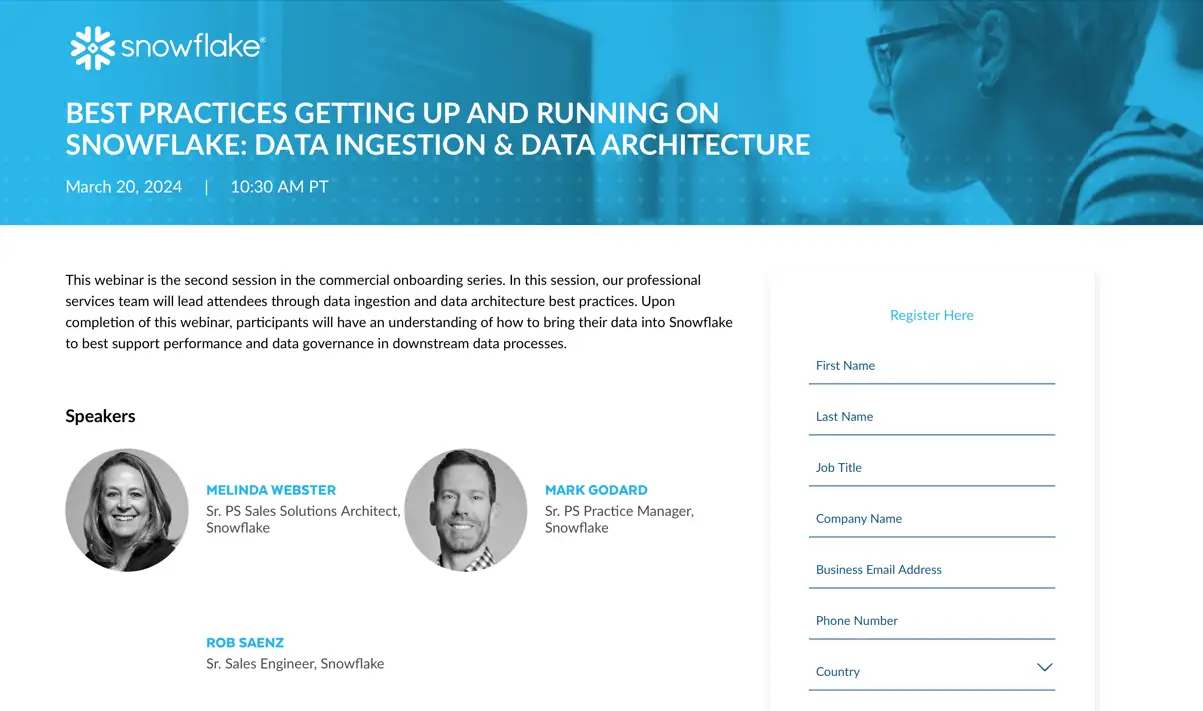
Strategy 5: Leverage notifications
If you’re a digital-first brand, leveraging notifications can be a game-changer for re-engaging inactive users. Push notifications, in particular, are a powerful tool for rebuilding lost connections. Whether it’s announcing a new feature developed based on customer feedback, sharing promotional offers, or providing valuable informational content, notifications can reignite interest and bring users back into the fold.
Strategy 6: Develop community-led growth initiatives
A thriving community around your brand creates a space where clients can connect, collaborate and grow. These communities act as hubs for knowledge exchange, support and networking, fostering a sense of belonging among members.
By facilitating these interactions, your brand evolves from a service provider to a trusted partner within a professional ecosystem. This community-driven approach strengthens existing client relationships and attracts new prospects through word-of-mouth and shared success stories.
Take Asana, for example. The work management platform has successfully implemented a community-led growth strategy to deepen user relationships and enhance product adoption. By establishing a space where users can connect, share best practices and provide feedback, Asana has cultivated a collaborative environment that drives customer satisfaction and loyalty.
💡Do you know
Sprinklr’s community forum software empowers your customers by providing tools and a safe space to engage with fellow members and your brand. Its integrated chat option seamlessly allows members to contact support when needed.
The standout feature, however, is Sprinklr AI. It analyzes every community conversation to gather actionable insights about your products and services while capturing critical feedback through contextual prompts and surveys. The AI-driven approach ensures that your community acts beyond a source of connection and remains a valuable resource for product improvement and customer satisfaction.
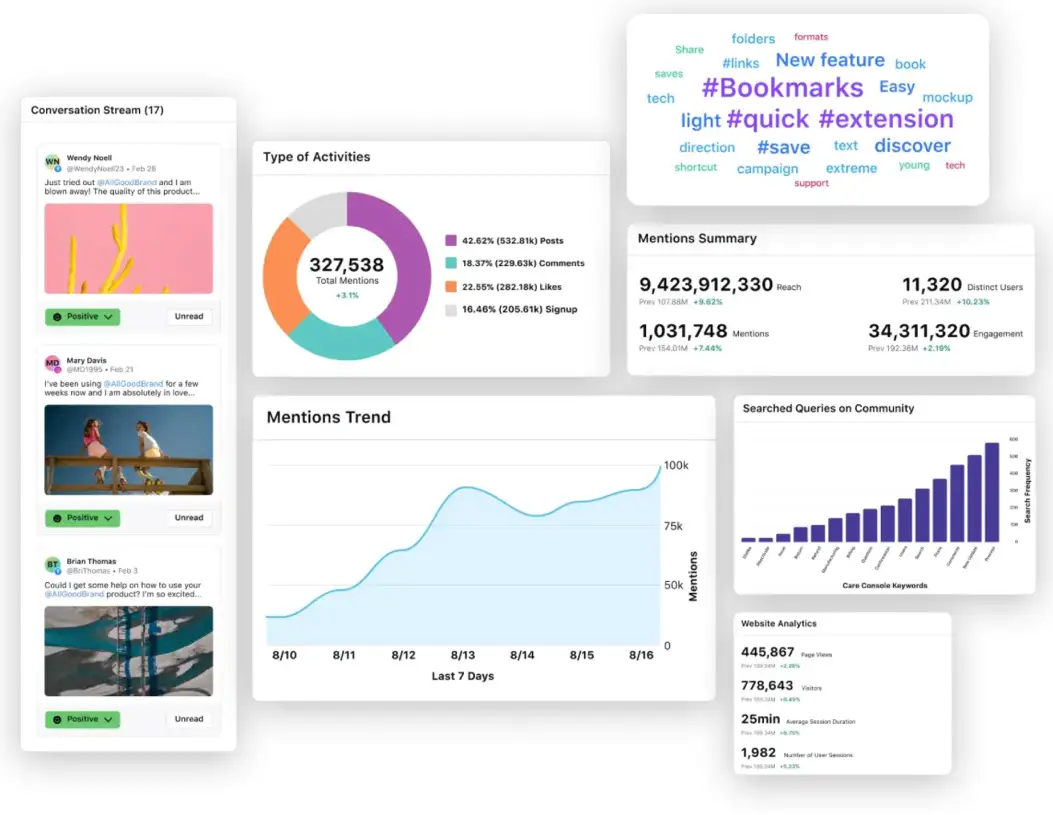

Strategy 7: Invest in experiential marketing
Experiential marketing involves crafting interactive events or environments where clients can experience your products or services firsthand. This strategy moves beyond traditional marketing by engaging clients' senses and emotions, leading to lasting impressions and stronger brand associations.
✅ Steps to execute this strategy
🎪 Host interactive workshops or demonstrations: Organize events where clients can engage directly with your products or services, gaining hands-on experience and insights into their practical applications.
🌐 Create virtual reality (VR) experiences: VR simulations allow clients to explore your solutions in a controlled, immersive environment, compellingly showcasing their benefits.
🖥️ Set up interactive product displays: Design engaging displays at trade shows or conferences that encourage client interaction and provide a tactile understanding of your offerings.
🎤 Organize exclusive networking events: Host events that bring together industry professionals, offering valuable networking opportunities while subtly promoting your brand.
For example, Cisco often hosts an annual conference called Cisco Live, a prime example of B2B experiential marketing.
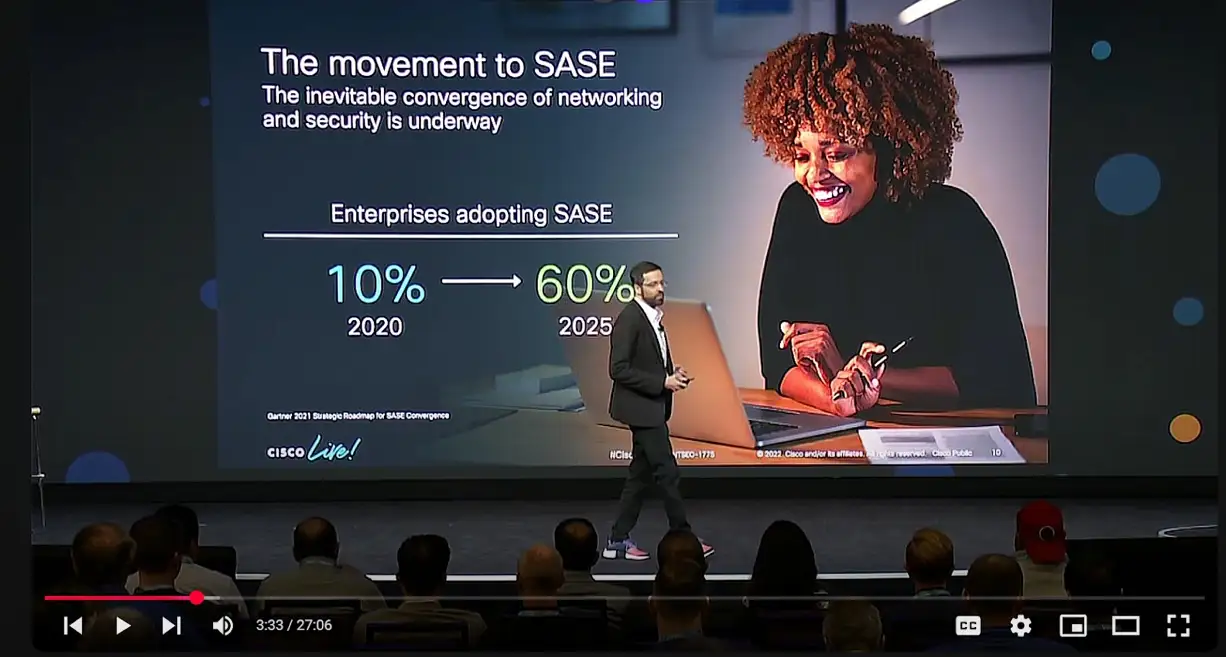
Strategy 8: Deploy AI-powered chatbots optimized for various touchpoints
AI-powered chatbots have evolved beyond basic customer support. They now play a pivotal role in delivering seamless engagement across the entire customer journey. By handling multiple touchpoints efficiently, chatbots improve both customer perception and experience, becoming indispensable tools for B2B companies aiming to scale personalization and responsiveness. Let’s see how:
Efficient query resolution: Chatbots can instantly address frequently asked questions, such as pricing, product features or troubleshooting steps. This reduces the workload for human agents and ensures that customers receive accurate and timely responses.
Lead qualification: At the top of the funnel, chatbots can engage website visitors by asking qualifying questions, collecting contact information and routing high-priority leads to sales teams. For example, if a visitor asks about enterprise pricing, the chatbot can schedule a meeting with a sales representative.
Proactive engagement: Chatbots can initiate conversations based on user behavior. For instance, if a customer lingers on a product page for an extended period, the chatbot can offer a demo or share relevant case studies, nudging them closer to a decision.
Personalized support: AI chatbots in customer service, powered by machine learning and natural language processing, can tailor interactions to individual preferences. If a returning customer seeks help, the chatbot can reference past interactions or purchases to provide contextually relevant assistance.
Post-sale engagement: After a purchase, chatbots can send follow-up messages to ensure the customer is satisfied, offer tutorials or suggest complementary products or services. This reinforces your commitment to customer success.
🔖Must Read: Maximizing engagement and elevating customer experience with Sprinklr AI+
😊 Good to know
Sprinklr’s conversational AI platform takes customer engagement to the next level by dynamically handling requests and seamlessly resuming conversations after interruptions — delivering truly human-like experiences. What sets them apart is the ability to build a single, brand-compliant bot and deploy it across 25+ channels (including voice) and in 100+ languages.
With an intuitive drag-and-drop interface, you can easily manage the entire lifecycle of your chatbots — from discovery and development to testing, deployment and performance measurement. This ensures your customers receive consistent, personalized and timely support, no matter where they engage with your brand.
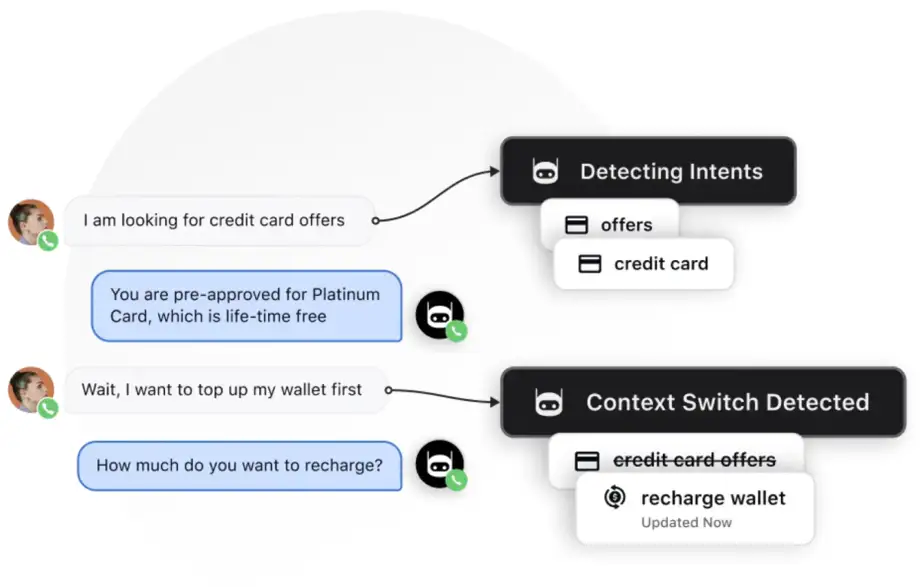

Turning strategies into scalable success with Sprinklr
The above strategies provide a solid roadmap for engaging B2B customers in 2025 and beyond. However, consistently executing these strategies can be daunting, especially when managing diverse personas, multiple channels and evolving customer expectations. This complexity often leads to resource strain, disjointed efforts and missed opportunities for meaningful engagement. That’s where a unified platform becomes indispensable.
Sprinklr’s Unified Customer Experience Management (CXM) platform simplifies the complexities of B2B engagement by combining customer interactions, service workflows and AI-driven insights into one seamless solution. Trusted by industry leaders, Sprinklr empowers you to deliver scalable, personalized experiences across every channel while optimizing team efficiency.
Ready to transform your B2B engagement? Request a free demo and let us help you turn these strategies into measurable success.
Frequently Asked Questions
Measure ROI by tracking metrics like customer retention, lifetime value, conversion rates and sales growth. Use tools like CRMs and analytics platforms to monitor engagement activities and their direct impact on revenue and customer satisfaction.
B2B customer engagement builds trust, improves client retention and drives upselling opportunities. It also births long-term relationships, enhances brand loyalty and creates advocates who amplify your brand through referrals and positive reviews.
Common mistakes include using generic messaging, neglecting decision-maker personas and failing to follow up consistently. Over-automation without human touch and a lack of proper data analysis can also derail engagement efforts.
Use data to segment customers by industry, role and behavior. Analyze purchase history, website interactions and survey responses to craft targeted messages and solutions that address specific pain points and goals.
Leverage platforms like LinkedIn and Twitter to share industry insights, host live Q&A sessions and engage with comments and feedback. Use targeted ads to reach decision-makers and build meaningful conversations around your brand.



